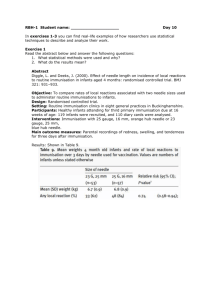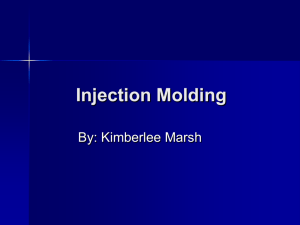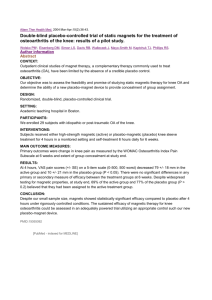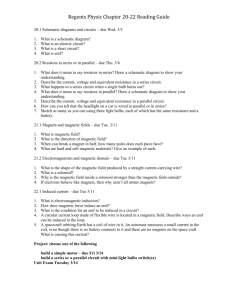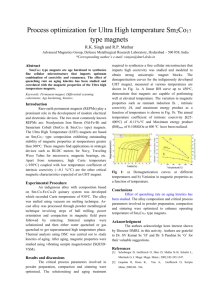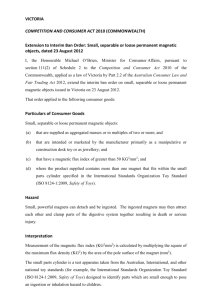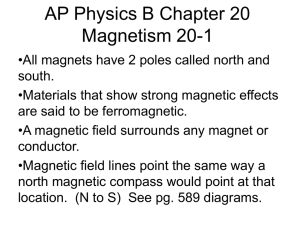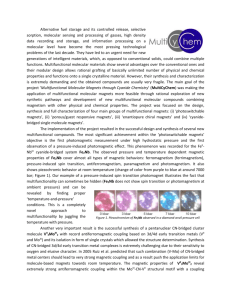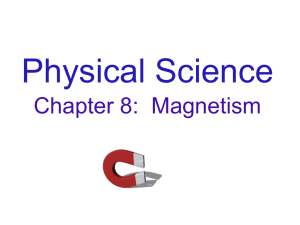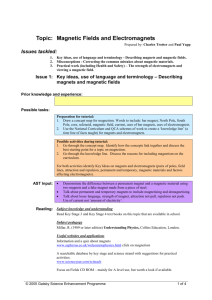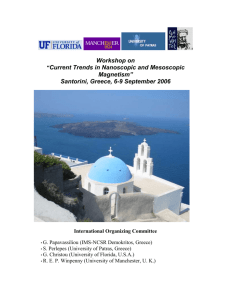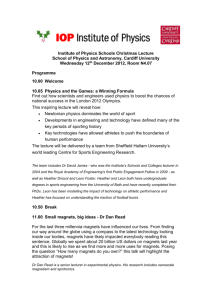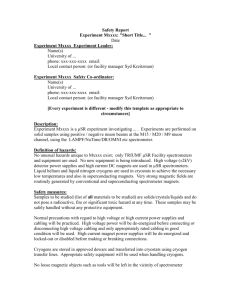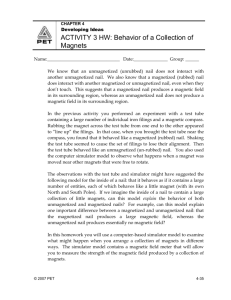t-test example 2
advertisement
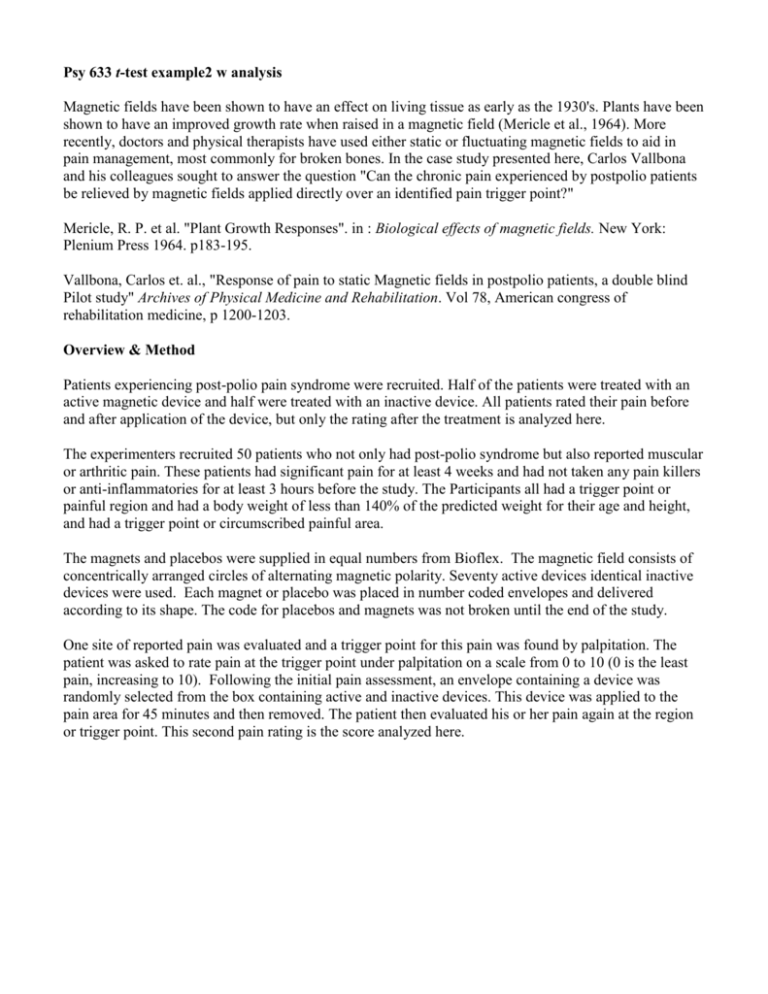
Psy 633 t-test example2 w analysis Magnetic fields have been shown to have an effect on living tissue as early as the 1930's. Plants have been shown to have an improved growth rate when raised in a magnetic field (Mericle et al., 1964). More recently, doctors and physical therapists have used either static or fluctuating magnetic fields to aid in pain management, most commonly for broken bones. In the case study presented here, Carlos Vallbona and his colleagues sought to answer the question "Can the chronic pain experienced by postpolio patients be relieved by magnetic fields applied directly over an identified pain trigger point?" Mericle, R. P. et al. "Plant Growth Responses". in : Biological effects of magnetic fields. New York: Plenium Press 1964. p183-195. Vallbona, Carlos et. al., "Response of pain to static Magnetic fields in postpolio patients, a double blind Pilot study" Archives of Physical Medicine and Rehabilitation. Vol 78, American congress of rehabilitation medicine, p 1200-1203. Overview & Method Patients experiencing post-polio pain syndrome were recruited. Half of the patients were treated with an active magnetic device and half were treated with an inactive device. All patients rated their pain before and after application of the device, but only the rating after the treatment is analyzed here. The experimenters recruited 50 patients who not only had post-polio syndrome but also reported muscular or arthritic pain. These patients had significant pain for at least 4 weeks and had not taken any pain killers or anti-inflammatories for at least 3 hours before the study. The Participants all had a trigger point or painful region and had a body weight of less than 140% of the predicted weight for their age and height, and had a trigger point or circumscribed painful area. The magnets and placebos were supplied in equal numbers from Bioflex. The magnetic field consists of concentrically arranged circles of alternating magnetic polarity. Seventy active devices identical inactive devices were used. Each magnet or placebo was placed in number coded envelopes and delivered according to its shape. The code for placebos and magnets was not broken until the end of the study. One site of reported pain was evaluated and a trigger point for this pain was found by palpitation. The patient was asked to rate pain at the trigger point under palpitation on a scale from 0 to 10 (0 is the least pain, increasing to 10). Following the initial pain assessment, an envelope containing a device was randomly selected from the box containing active and inactive devices. This device was applied to the pain area for 45 minutes and then removed. The patient then evaluated his or her pain again at the region or trigger point. This second pain rating is the score analyzed here. Analyses Condition Treatment Control N 29 21 Mean 4.38 8.43 Median 4.00 9.00 Minimum 0.00 4.00 Maximum 10.00 10.00 s 3.14 1.86 se of mean 0.59 0.41 One way to test the hypothesis that magnets reduce pain is to test the null hypothesis that there is no difference in post-treatment ratings of pain. If this null hypothesis can be rejected, then it can be concluded that there is an effect of treatments, i.e. a difference in ratings between those treated with active magnets and those treated with placebo magnets. The active magnet group ratings were more variable (sd= 3.14) than were the ratings of the placebo group (sd = 1.86). Levene’s test for equal variances [not included in these printouts] showed that the variances were significantly different. Below are the results of the t-test done in SPSS (slightly modified for clarity). t df Sig. (2- Mean tailed) Diff 95% Confidence Interval of the Mean Difference Lower Upper Equal variances assumed 5.264 48 < .001 -4.049 -5.596 -2.503 Unequal variances 5.695 46.42 < .001 -4.049 -5.480 -2.618 Effect size for the t-test can be determined using r2 = t2 / (t2 + df). Participants who had an active magnet reported significantly less pain than did participants who received the placebo, t (46.42) = 5.695, p < .001, r2 = .411. Since this is the first study to show a clearly significant reduction using active magnets, caution should be exercised in interpreting the results. The effect size is rather large, but we are still not sure whether the effect will be of great practical use. Caution is also strongly advised in generalizing the results from pain caused by polio to other types of pain. Nonetheless, these results provide a promising demonstration of the effectiveness of this kind of therapy, and additional study of the effects of magnets on pain is warranted.

